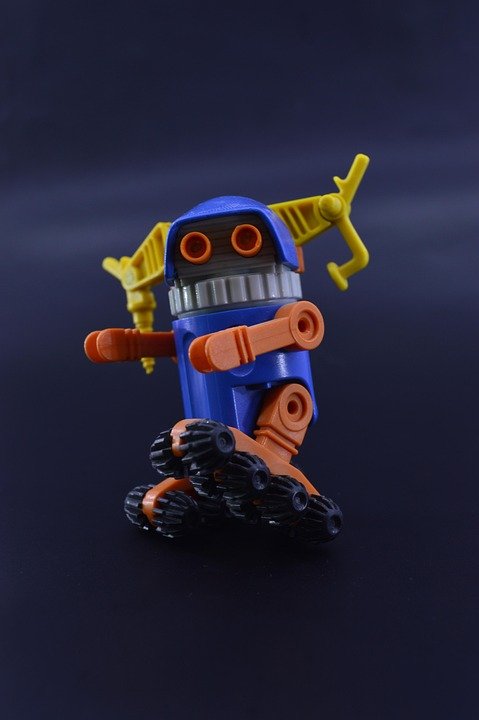Of course! Here is an article on the incredible journey of robotics.
From Fiction to Factory: The Incredible Journey of Robotics
For centuries, humanity has been captivated by the idea of artificial beings. From the bronze giant Talos in Greek mythology to the Golem of Prague, we have dreamt of creating life from inanimate matter. This fascination found its modern voice in science fiction, but what was once the domain of storytellers has now become a foundational pillar of our industrial, medical, and exploratory world. This is the incredible journey of robotics—from the ink of fiction to the steel of the factory floor.
The Dream Begins: Imagination and Ink
The word “robot” itself is a product of art. It was first introduced to the world in 1920 by Czech playwright Karel Čapek in his play R.U.R. (Rossum’s Universal Robots). Derived from the Czech word robota, meaning “forced labor,” these fictional artificial workers painted a cautionary tale about humanity’s ambition.
But it was science fiction titan Isaac Asimov who gave robots their soul. In his 1940s stories, Asimov introduced the “Three Laws of Robotics,” a set of ethical principles hardwired into his creations to ensure they served humanity safely.
- A robot may not injure a human being or, through inaction, allow a human being to come to harm.
- A robot must obey the orders given it by human beings except where such orders would conflict with the First Law.
- A robot must protect its own existence as long as such protection does not conflict with the First or Second Law.
These laws, though fictional, provided the first real philosophical framework for human-robot interaction and continue to influence discussions on artificial intelligence ethics today. For decades, robots remained magnificent concepts, confined to the pages of books and the reels of film.
The First Steps: The Birth of the Industrial Arm
The leap from fiction to reality required a spark of engineering genius. That spark came from George Devol, an inventor who, in 1954, patented a programmable robotic arm he called the “Unimate.” In collaboration with engineer Joseph Engelberger, they established Unimation, the world’s first robotics company.
In 1961, the first Unimate was installed on a General Motors assembly line in New Jersey. Its job was brutally simple: to lift and stack hot, heavy pieces of die-cast metal. It was dangerous, repetitive work that humans were happy to give up. The Unimate was a clanking, hydraulic beast, but it was revolutionary. It could be reprogrammed, it worked tirelessly, and it never complained.
The age of the factory robot had begun. The automotive industry, with its need for precision and repetition, became the primary driver of robotic adoption. Welding, painting, and assembling cars became the domain of these tireless industrial arms, ushering in an era of unprecedented manufacturing efficiency.
The Robotic Revolution: Beyond the Assembly Line
For a long time, “robot” was synonymous with the massive, caged arms of a factory. But the rapid advancement of computing power, sensors, and artificial intelligence has shattered that limited definition. Today, robots are venturing into every corner of our lives.
-
In Our Hospitals: Surgical robots like the da Vinci system allow surgeons to perform complex, minimally invasive procedures with superhuman precision. These machines don’t replace the surgeon; they enhance their abilities, leading to smaller incisions, less pain, and faster recovery times.
-
On Other Planets: Far from the sterile environment of an operating room, robotic explorers like NASA’s Mars rovers, Curiosity and Perseverance, traverse hostile alien landscapes. They are our eyes, ears, and hands on worlds we cannot yet visit, conducting experiments and searching for signs of past life millions of miles from home.
-
In Our Warehouses and Homes: The unseen dance of automation in an Amazon fulfillment center is a marvel of modern robotics. Kiva robots scurry across the floor, lifting and transporting entire shelves of products to human workers, optimizing logistics on a colossal scale. In our homes, a similar, smaller revolution is underway with robotic vacuums like the Roomba, which autonomously navigate our living rooms.
The key to this expansion is the fusion of mechanics with intelligence. Early robots were programmed to repeat a single motion. Modern robots, powered by AI and machine learning, can see with computer vision, learn from experience, and adapt to changing environments.
The Horizon Beckons: The Future is Collaborative
The journey of robotics is far from over. The next chapter promises even more profound integration into our society. The future isn’t about replacement, but collaboration.
“Cobots,” or collaborative robots, are designed to work safely alongside humans, sharing tasks on an assembly line or in a lab without the need for safety cages. Soft robotics, inspired by biological creatures like octopuses, promises flexible, gentle robots capable of handling delicate objects or navigating complex spaces.
Of course, this rapid progress brings pressing ethical questions to the forefront. Asimov’s Laws are no longer just a sci-fi concept but a real-world consideration as we debate the implications of autonomous drones, job displacement, and the moral responsibilities of AI.
From a playwright’s cautionary tale to the surgeon’s steady hand, the story of robotics is a testament to human ingenuity. It is a journey that has taken our wildest dreams and forged them into tangible, world-changing tools. The next chapter is still being written, and it is a future we will build, program, and explore together—side by side with the machines we once only imagined.

